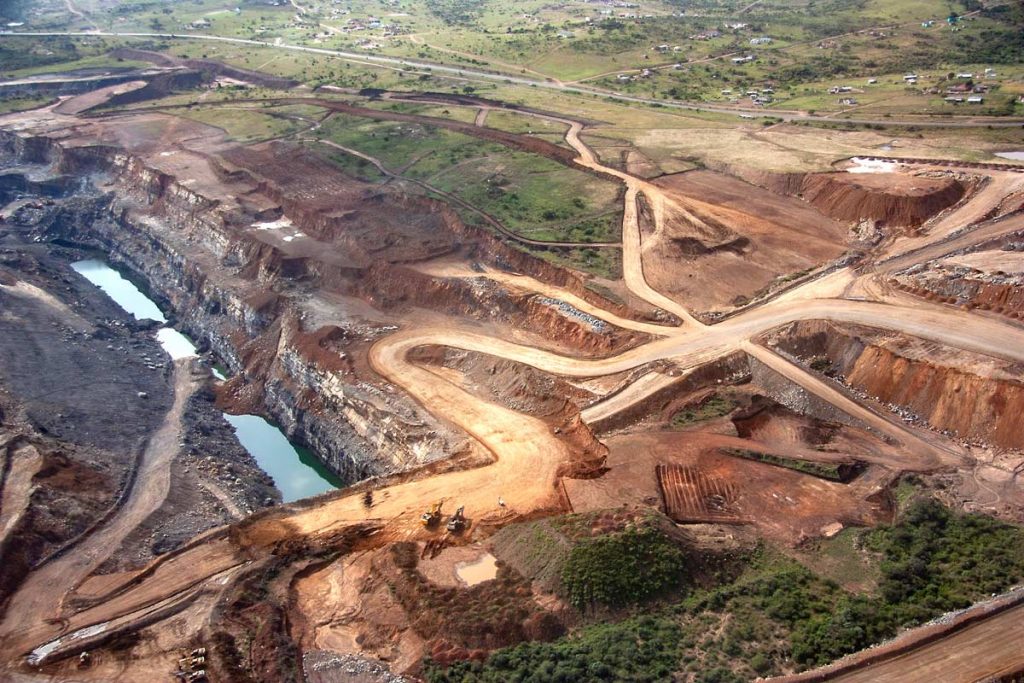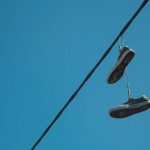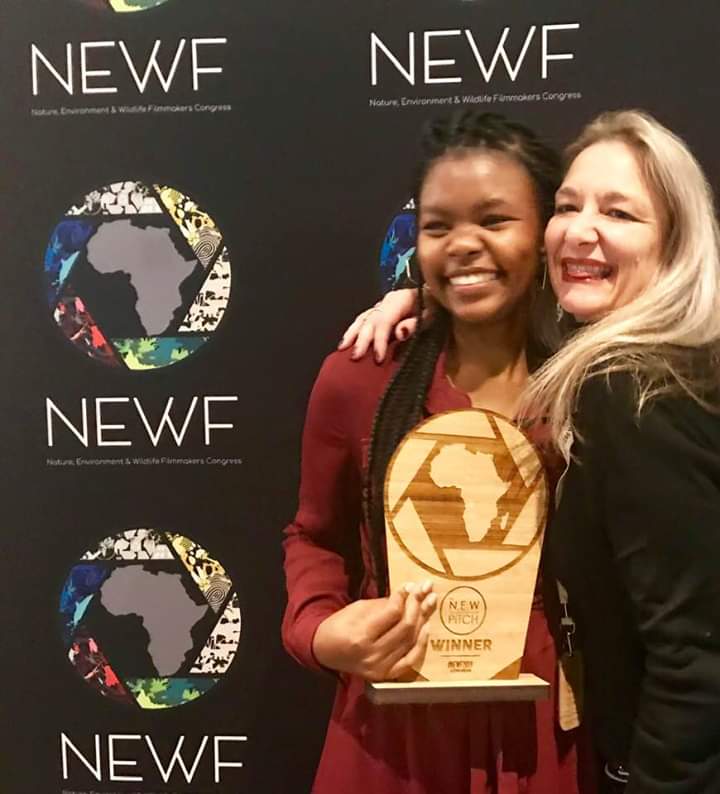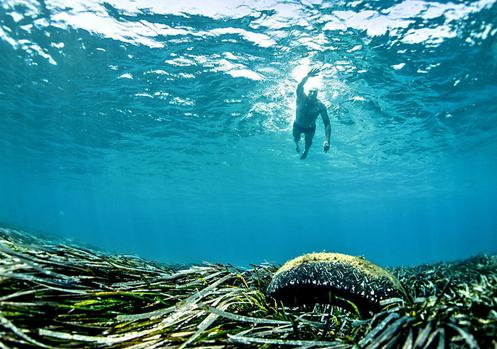Shootings, threats and other violence have ratcheted up tensions in Somkhele where a mine extension has exposed deep fault lines in a poor community. Fred Kockott and Matthew Hattingh report
The Mthethwa home, near the Somkhele coal mine in South Africa’s KwaZulu-Natal province, was raked by gunfire recently while the family, including a two-year-old grandchild, were in bed or preparing to turn in for the night. 19 spent cartridges were found on the scene.
Despite this, the Mthethwa family are reluctant to move.
“We know that if we are not here, our house will be burnt down,” says the 56-year-old head of the household, Tholakele Mthetwa.

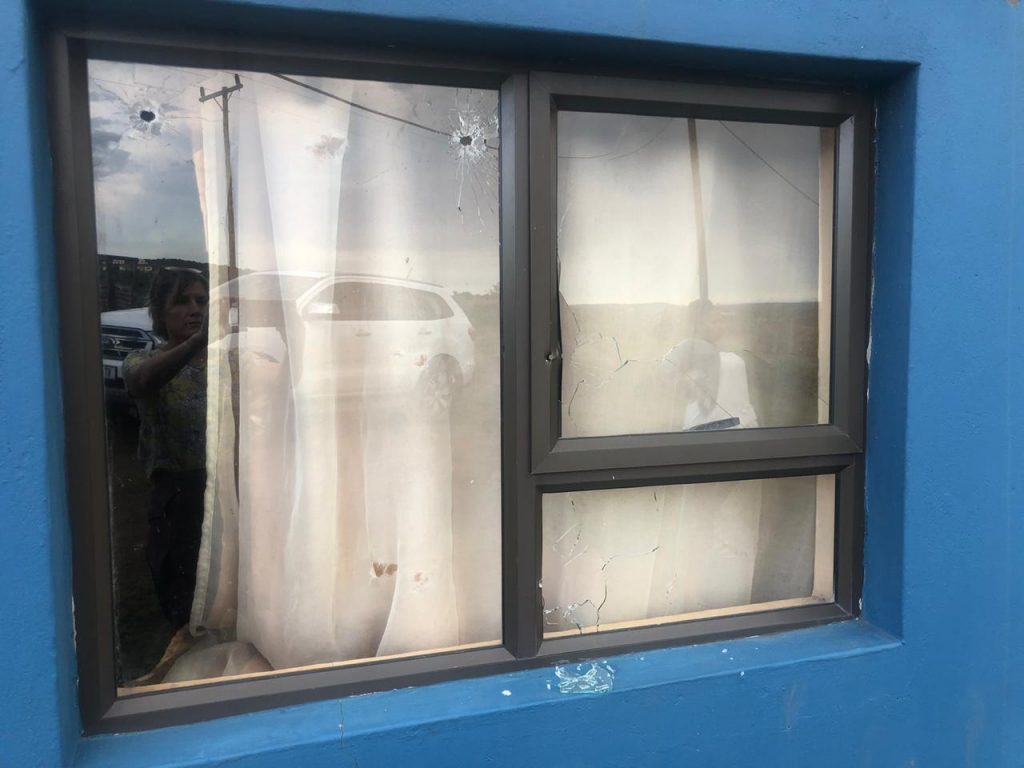
Ominous text
Then two weeks later, on Wednesday, May 6, a neighbour in the village of Ophondweni, Bheki Mdletshe, received the following cellphone text message: “If you are stubborn enough not to move we will shoot at whomever is working at your household so that we could all starve… And do not forget we know where the breadwinner works.”
The Mthethwa and Mdletshe families live on land earmarked for extension of the Somkhele coal mine, one of the country’s largest open-cast coal mines, close to Africa’s oldest proclaimed nature reserve, Hluhluwe-iMfolozi Game Park.
Much of the deposits at the Somkhele mine have been exhausted and its owners, Tendele Coal Mining, need to break new ground.
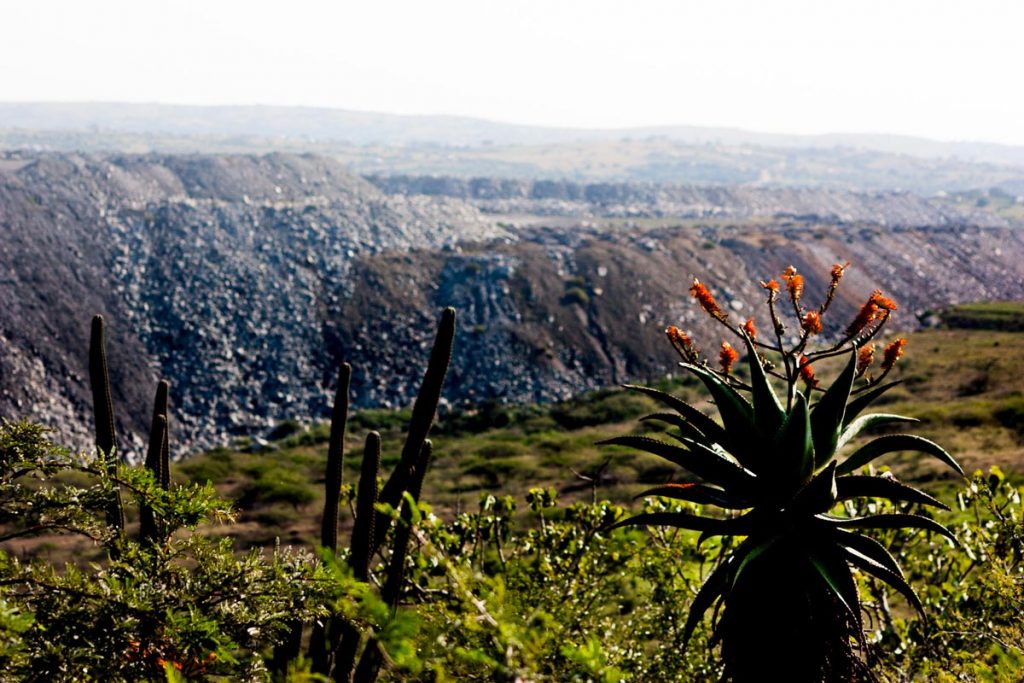
Mining rights
Mining rights granted in 2016 – valid until October 2046 – allow Tendele to extend operations including into Ophondweni and neighbouring Emahlahleni. Although the mining licence covers an area of 220 square kilometres, extended mining operations would only cover a fraction of this – about 10 square km, according to Tendele CEO Jan Du Preez.
Tendele has offered residents what it considers to be generous compensation – akin to a winning lottery ticket, said Du Preez.
He said 24 out of 140 households are holding out, threatening the mine’s future and the jobs of 1,600 mine employees and subcontractors in an area where unemployment is high.
The mine was forced to shut from 27 March to 20 April under a national Covid-19 lockdown. It has since been ramping up production – metallurgical anthracite chiefly – but has lost more than one month’s sales and was now facing growing uncertainty amid a slump in world commodity markets.
This may have served to ratchet up the pressure on the Mthethwa and Mdletshe families and other hold-outers.
Wider conflict
But the Mfolozi Community Environmental Justice Organisation (MJECO), which counts 4,000 members in the region (a figure the mine disputes) see it as a far wider conflict, beyond the mine and its supporters and dependents, on one side, and the two dozen hold-outers and their families, on the other.
Mining affects a bigger community – the thousands of people who live near the existing and planned extension to mine.
While the mine’s business development manager, Nathi Kunene, provided Mongabay with a detailed account of the positive benefits arising from the mine beyond direct employment, many of MJECO’s members are subsistence farmers. They complain that coal dust pollutes their crops, turns their white chickens grey and the intestines of their goats black.
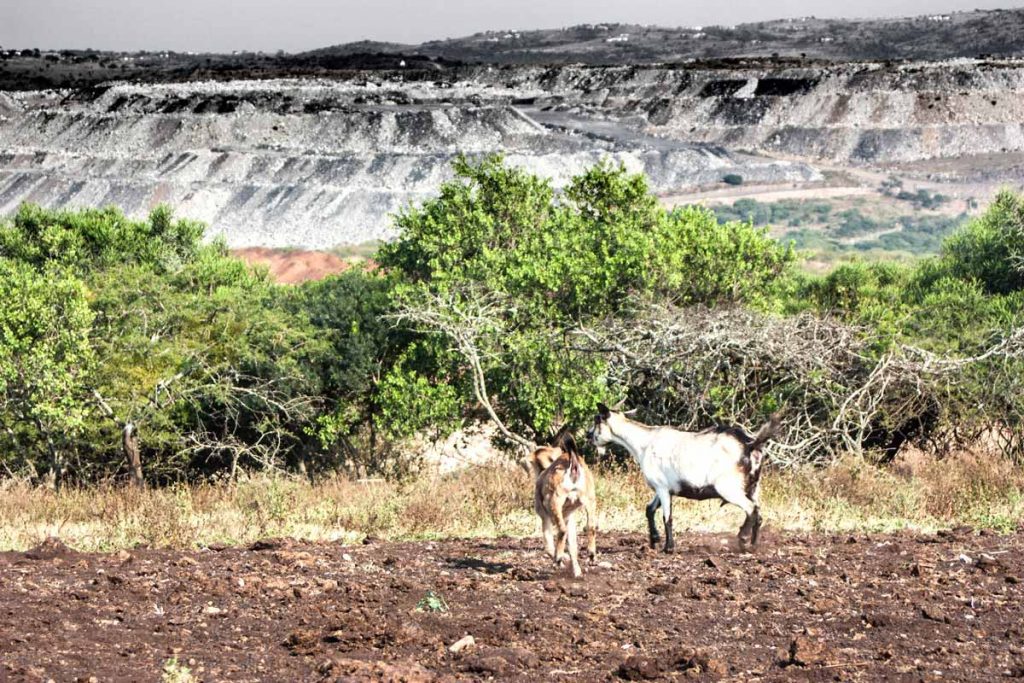
Coal dust
Coal dust also pollutes rainwater – a vital source for many. The mine also requires lots of water, adding to pressure on existing sources.
MJECO’s attorney, Kirsten Youens said during a drought-stricken period in 2016, the mine had sunk boreholes into the dry river beds of the iMfolozi River – a major source of water to the nearby iSimangaliso Wetland Park, a UNESCO World Heritage Site.
“They did not have the proper water use authorisations to do so,” said Youens. The mine disputes this and a host of other accusations about damage to nearby homes caused by blasting, excessive noise, relocation of graves without proper consent and, more recently, bullying tactics to force people to relocate.
Legal battles
MJECO is challenging the mine through the courts in two parallel cases. One of the cases, expected to be heard by the High Court in Pretoria later this year, is to set aside the 2016 extension.
The second case is an appeal hearing. It follows a failed High Court bid in 2018, where Global Environmental Trust and MJECO applied for an order compelling Tendele to halt all mining until it complied with environmental and other legislation. The judge dismissed the application, saying it was one thing to allege a statutory breach, but quite another to provide proof. He later granted leave to appeal.
Heads of arguments in the appeal case were filed on 8 May by leading land rights lawyer, Tembeka Ncgukatiobi. In court papers, he said large-scale mining was often lauded for its economic benefit, but it came at a cost to people and the environment.
“It can produce waste which is harmful to the health of communities. Mining is also disruptive of social and cultural norms – sometimes ancestral graves must make way for open cast mines. Members of a single community in favour of mining, supposedly for the promised economic benefit, can be pitted against those in opposition, sometimes concerned about the damage of mining,” said Ncukatiobi.
He said these considerations were covered by the constitution and environmental legislation.
Sharp edge
“The sharp edge of the appeal is that compliance with environmental legislation before commencement of mining activity is not optional, but obligatory,” said Ncukatiobi.
Legally, the case is a complex one that exposes the broader pattern and effects of new and old legislation on resource extraction, the environment and land rights in South Africa.
“Old order legislation and the common law in South Africa continues to inform some judicial interpretations of statutes in three important ways,” said Ncgukatiobi. “First, mining laws continue to be perceived as superior to environmental laws. This case is a perfect example where this approach was taken by the High Court.”
“Second, environmental concerns are rendered subservient to commercial, trade and business concerns. There is excessive focus on the supposed economic benefits of mining, with the concerns of long-term sustainability of the environment and local economies ignored.”
“Third, mining interests often trump land rights – sometimes giving rise to a form of ‘expropriation without compensation’ in the sense that once mining rights are granted, the rights holder believes it has the right to remove people from their land (including the destruction of cultural sites like graves). This appeal seeks to reverse this and to develop a nuanced and balanced approach to mining concerns on the one hand and land and environmental interests, on the other,” said Ncgukatiabi.
Landmark case
He said last year’s landmark High Court judgement on the Xolobeni Minerals Sands Project was particularly relevant. The court ruled that South Africa’s minister of mineral resources had to obtain full and formal consent from the Xolobeni community in the country’s Eastern Cape province before granting mining rights.
The ruling sought to achieve a balance between mining interests on the one hand and others like land, water and cultural rights, without creating a relationship of subservience between these, said Ncukgatiobi. “It was held that communities living on the land and closely affected by mining should be consulted and consent to the deprivation of land,” said Ncgukatiobi. “This line of argument applies equally to (the Tendele appeal) case as no consent was sought.”
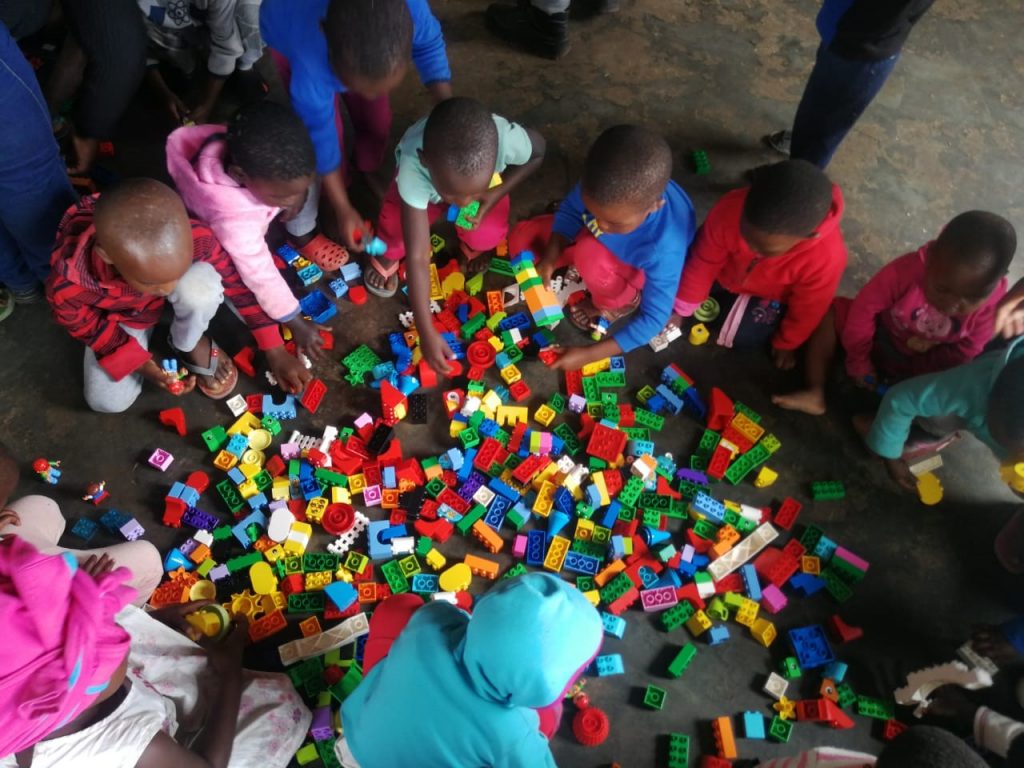
But Du Preez, who is the chief executive of Petmin, Tendele’s holding company, disputes this, arguing that there has been a “massive distortion of facts”, both in court and in media coverage of the dispute. Thousands, he said, were “100 percent in support of the mine”.
Hold-outers
The company was now pursuing court intervention too. It has served High Court papers advising 24 families to appear in the Pietermaritzburg High Court on June 17 for a judge to determine the compensation to be paid to them.
“They [the households refusing to accept the mine’s offer] are asking … unreasonably more than what their houses are worth,” said Kunene. For an example, there is one house that is worth R300,000, but the family want R7 million. I do not know what informs this. They will not tell us,” said Kunene. “They are trying to blackmail the mine for more money, and we cannot move a single family until all families have signed.”
There was also a “huge problem”, he said, with people moving into an extension area and building shacks in a ploy to get relocation settlements.
Du Preez said relocation negotiations had been happening for more than 33 months now, ultimately leading to current cul-de-sac. He said if Tendele could not begin with site preparation work in Ophondweni and Emalahleni by July 1, the company would be forced to retrench all but 77 employees and to close.
Knock-on effect
This would have a huge knock-on effect, ending all the benefits of the company’s social and labour plan, said Kunene. He said this included contracts with 70 community-based entrepreneurs, skills training for the unemployed people, agricultural and basic infrastructure projects sponsored by the mine as well as educational initiatives at creches, primary schools and an edu-centre catering for high school and university students.
On criticism the mine had degraded and depleted the resident’s water, Du Preez said the opposite was true. Tendele, he insisted, had done more than its bit to assist residents with water where the local municipality had failed to provide this basic service.
Mistakes corrected
He acknowledged the mine had made mistakes in the past, but since 2016 had worked to rectify them. To this end it held many meetings with the community and its elected and traditional leaders – more than 400 – including through a multiparty forum, the mine helped establish.

Land ownership in Ophondweni, like large swathes of the province, is on land held by the Zulu king’s Ingonyama Trust. Any negotiations have to involve a hierarchy of traditional leaders operating through their own councils, in addition to elected representatives.
Vexing matters
It can make settling vexing land rights matters far from straightforward. The hold-outers say it has also brought more pressure to bear on them.
Mthethwa and Mdletshe were among those summoned to a traditional council meeting in February where they were warned to sign relocation papers. If they failed to do so “people will get shot”, they were allegedly told.
In sworn statements to their attorneys, they give similar accounts of what was said at the meeting and the names of the traditional leaders and their representatives who were present.
Visits, calls and other messages that they regarded as threatening, have followed since then.
Responding, the deputy chairman of the Mpukunyoni Traditional Council and former local mayor, MQ Mkhwanazi, said he and other traditional leaders had been instrumental in “bringing mining to the area for the benefit of all people”.
“The mine is authorised by the whole community but a few people – some of them not from here, from the outside – are instigating people to fight the mine.”
Mkhwanazi said he had heard about the drive-by shooting at the Mthethwa home, “but no-one was injured,” he said. “It just happens that people are shooting up (in the air) and doing those things. I can’t deny that, but I am afraid that those people who don’t want to mine, can even shoot through their own windows so they can say that people are attacking them,” said Mkhwanazi.
Police confirmed that an attempted murder case had been opened in the Mthethwa case, but declined to comment on the death threat received by Mdletshe.
Tardy
Several human rights activists have expressed concern that the local police have been tardy in responding to these recent incidents of intimidation and violence.
Among those doubtful that any perpetrators will be brought to book is Mary de Haas, who has for many years monitored violence in the province.
“People who have been threatened, or had their homes shot at by what appear to be R4/R5 (assult) type guns, are not being given the protection which the constitution demands the police to provide,” wrote de Haas in letters sent to senior local and provincial police officials.
Youens said that amid these concerns, the mine management continued to send out open letters to staff and contractors directly blaming her clients for impending job losses.
She said this amounted to incitement. “It’s very hard to read them (the letters) in any other way,” she said.
Desired outcome
On the desired ultimate outcome, Youens said: “My clients would like the mine to close, and the land already destroyed rehabilitated in such a way that trees and indigenous vegetation can grow again, and the water gets restored to its original levels. If that’s not possible, at the very least we need to stop the mine’s expansion. It cannot ruin any more lives.”
But Du Preez reckons closure of the mine will be disastrous.
High stakes
“It will feel like permanent lockdown in the area. The percentage of people looking for basic food, and without water, will dramatically increase,” said Du Preez.
“And here’s the irony,” added Du Preez. “I do not need this mine. People who are highly trained, like Nathi (Kunene) do not need this mine. We’ll be fine. The 70 people who have created new businesses for themselves will be okay. But the people shouting and screaming on the sidelines, will have nothing. 20,000 people we have trained and benefitted from the mine, will have nothing. This is the story that needs to be told one day.”
“And if we have legislation that makes it impossible to create businesses, South Africa is going to die,” said Du Preez.
“That’s typical mining rhetoric,” said Youens. “The narrative in South Africa needs to change and I feel humbled by courageous people who risk their lives to bring about this change. For them, this is no way like a lottery – it is about their lives.” – additional reporting Laura du Toit.
- Fred Kockott and Matthew Hattingh direct Roving Reporters training project, Developing Environmental Watchdogs. Laura du Toit is a Rhodes University journalism student enrolled on the programme.
This story was first produced for GroundUp and is free to republish so long as you credit the authors and do not change the text. Please include a link back to the original article.
FEATURED IMAGE
